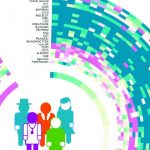 The last few years has seen a tremendous rise in the hype around big data and it’s applications for medicine. The potential is clear, with vast amounts of medical data now being generated, whether by genome sequencing or wearable technologies, and the greater ability we have for making sense of that data through things like machine learning and advanced computing.
The last few years has seen a tremendous rise in the hype around big data and it’s applications for medicine. The potential is clear, with vast amounts of medical data now being generated, whether by genome sequencing or wearable technologies, and the greater ability we have for making sense of that data through things like machine learning and advanced computing.
Whilst the hype cycle is undoubtedly in play, the potential remains tremendous, not least in the delivery of personalized medicine. A good example of this is a recent competition to enhance the treatment of leukemia.
The DREAM 9 challenge saw over 30 teams compete to make sense of patient data harvested from patients with acute myeloid leukemia. The competition was chronicled in a recently published paper from a team of Rice University scientists.
A dream team
DREAM, or Dialogue for Reverse Engineering Assessment and Methods, provides a platform for crowdsourced studies in the field of biomedical challenges using advanced computational tools.
Acute myeloid leukemia was chosen as there is no known genetic cause for the disease, which renders it a challenge for scientists exploring possible treatments for the disease.
Participants in the competition were given outcomes data from 191 patients and a further dataset from 100 patients that didn’t include the outcomes of the treatment. The aim was to train the algorithms so that they could accurately predict how the patient would respond to treatment (chemotherapy).
The paper reveals that the winning teams achieved an accuracy of nearly 80%. Equally interesting was that all of the entrants struggled to predict the outcomes of patients that were classified as being resistant to therapy. For this challenging group, the accuracy rate dropped to an average of 42% among all participants.
“We used DREAM as a way to get general insight into making more accurate predictive models of clinical outcomes,” the authors say. “Steve (Kornblau), who runs the core banking facility for leukemia patients at MD Anderson Cancer Center, had the foresight to start gathering and banking patient biopsy samples when he was a resident over 25 years ago. The bank is a fantastic resource and a tremendous gift to the public. Genomic and proteomic analysis on a portion of these patient biopsies served as the basis for DREAM.”
Such a competition is unlikely to grab headlines or make huge waves, but it is nonetheless a sign that things are moving in the right direction and that progress is clearly being made.
Treating leukemia remains fiendishly difficult, but the best models from the competition do provide clinicians with greater insight into how patients will uniquely respond to treatment. The Rice based lab behind the challenge are now using the insights from the challenge to experiment further on leukemia cell lines to see whether we can gain better results from targeting specific proteins during treatment.